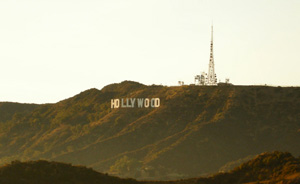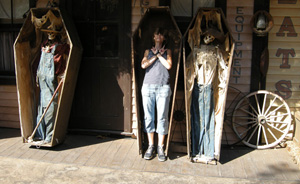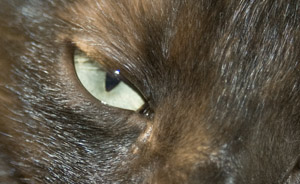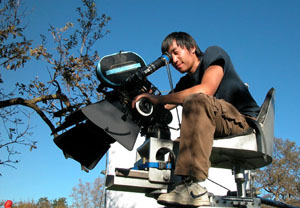Refer to this video before shooting
How Over the Shoulder Connect the Story
Basic Camera Movement
Tilt: Moving the cameras lens up or down while keeping its horizontal axis constant. Nod your head up and down - this is tilting.
Pan: Moving the camera lens to one side or another. Look to your left, then look to your right - that's panning.

Zoom: Zooming is one camera move that most people are probably familiar with. It involves changing the focal length of the lens to make the subject appear closer or further away in the frame. Most video cameras today have built-in zoom features. Some have manual zooms as well, and many have several zoom speeds. Zooming is one of the most frequently-used camera moves and one of the most overused. Use it carefully.
Pedestal: Moving the camera up or down without changing its vertical or horizontal axis. A camera operator can do two types of pedestals: pedestal up means "move the camera up;" pedestal down means "move the camera down." You are not tilting the lens up, rather you are moving the entire camera up. Imagine your camera is on a tripod and you're raising or lowering the tripod head (this is exactly where the term comes from).
Dolly: Motion towards or motion from. The name comes from the old "dolly tracks" that used to be laid down for the heavy camera to move along - very much like railroad tracks - in the days before Steadicams got so popular. The phrase dolly-in means step towards the subject with the camera, while dolly-out means to step backwards with the camera, keeping the zoom the same. Zooming the camera changes the focal length of the lens, which can introduce wide-angle distortion or changes in the apparent depth of field. For this reason, it's sometimes preferable to dolly than zoom.
Truck: Trucking is like dollying, but it involves motion left or right. Truck left means "move the camera physically to the left while maintaining its perpendicular relationship." This is not to be confused with a pan, where the camera remains firmly on its axis while the lens turns to one direction or the other. You might truck left to stay with a pedestrian as she walks down a street.
Advance/ Fancy Camera Movement
Now that you understand the basics, here are few more advanced moves. Some of these usually require the use of a steady device and one or two crew members to execute smoothly.
Handheld Shooting: Sometimes the action is moving too quickly or too unpredictably for the camera to be on a tripod. This calls for making the camera more mobile and able to follow the action of a scene. Most times the camera will simply be held by the operator, who will then employ a number of basic camera moves by moving the feet - trucking in and out, dollying in one direction or another, tilting, panning, zooming - and combinations of all of these.
Floating Cam or Stabilizing Shot: The Steadicam was invented in 1971 by Philadelphia native Garrett Brown. Famously used in the jogging sequence in Rocky and extensively with exceptional effect in the Kubrick masterpiece, The Shining. It uses a series of counterweights (and gyroscopes on more-expensive models) to keep a handheld camera's motion very smooth. Although the term "Steadicam" is used often, this is a trademark name belonging to the Merlin company. Similar to Kleenex for tissues, we call the devices that are non-Steadicams "stabilizers". Stabilizers for the small-business video producer are plentiful, much more affordable and are widely used today.
Crane/Jib: A crane can be used to lift a camera (and operator, if it's big enough) from low to high shooting positions. Less expensive jibs can support the weight of a camera and lift it several feet off of the ground. Sometimes called a boom, but the boom term usually applies to the device that holds a microphone aloft.
Framing and Camera angle.
Framing or Shot Length
1 . Extreme long shot

Extreme Long Shot
This can be taken from as much as a quarter of a mile away, and is generally used as a scene-setting, establishing shot. It normally shows an EXTERIOR, eg the outside of a building, or a landscape, and is often used to show scenes of thrilling action eg in a war film or disaster movie. There will be very little detail visible in the shot, it's meant to give a general impression rather than specific information.
The extreme long shot on the left is taken from a distance, but denotes a precise location - it might even connote all of the entertainment industry if used as the opening shot in a news story.

Long Shot
2. Long Shot
This is the most difficult to categorise precisely, but is generally one which shows the image as approximately "life" size ie corresponding to the real distance between the audience and the screen in a cinema (the figure of a man would appear as six feet tall). This category includes the FULL SHOT showing the entire human body, with the head near the top of the frame and the feet near the bottom. While the focus is on characters, plenty of background detail still emerges: we can tell the coffins on the right are in a Western-style setting, for instance.

Medium Shot
3. Medium Shot
Contains a figure from the knees/waist up and is normally used for dialogue scenes, or to show some detail of action. Variations on this include the TWO SHOT (containing two figures from the waist up) and the THREE SHOT (contains 3 figures...). NB. Any more than three figures and the shot tends to become a long shot. Background detail is minimal, probably because location has been established earlier in the scene - the audience already know where they are and now want to focus on dialogue and character interation. Another variation in this category is the OVER-THE-SHOULDER-SHOT, which positions the camera behind one figure, revealing the other figure, and part of the first figure's back, head and shoulder.

Close up
4. Close-Up
This shows very little background, and concentrates on either a face, or a specific detail of mise en scène. Everything else is just a blur in the background. This shot magnifies the object (think of how big it looks on a cinema screen) and shows the importance of things, be it words written on paper, or the expression on someone's face. The close-up takes us into the mind of a character. In reality, we only let people that we really trust get THAT close to our face - mothers, children and lovers, usually - so a close up of a face is a very intimate shot. A film-maker may use this to make us feel extra comfortable or extremely uncomfortable about a character, and usually uses a zoom lens in order to get the required framing.

Extreme Close Up
5. Extreme Close-Up
As its name suggests, an extreme version of the close up, generally magnifying beyond what the human eye would experience in reality. An extreme close-up of a face, for instance, would show only the mouth or eyes, with no background detail whatsoever. This is a very artificial shot, and can be used for dramatic effect. The tight focus required means that extra care must be taken when setting up and lighting the shot - the slightest camera shake or error in focal length is very noticeable.
Camera Angles
The relationship between the camera and the object being photographed (ie the ANGLE) gives emotional information to an audience, and guides their judgment about the character or object in shot. The more extreme the angle (ie the further away it is from eye left), the more symbolic and heavily-loaded the shot.
1. The Bird's-Eye view
This shows a scene from directly overhead, a very unnatural and strange angle. Familiar objects viewed from this angle might seem totally unrecognisable at first (umbrellas in a crowd, dancers' legs). This shot does, however, put the audience in a godlike position, looking down on the action. People can be made to look insignificant, ant-like, part of a wider scheme of things. Hitchcock (and his admirers, like Brian de Palma) is fond of this style of shot.

A cameraman, raised above the action, gets a high angle shot
2. High Angle
Not so extreme as a bird's eye view. The camera is elevated above the action using a crane to give a general overview. High angles make the object photographed seem smaller, and less significant (or scary). The object or character often gets swallowed up by their setting - they become part of a wider picture.
3. Eye Level
A fairly neutral shot; the camera is positioned as though it is a human actually observing a scene, so that eg actors' heads are on a level with the focus. The camera will be placed approximately five to six feet from the ground.
4. Low Angle
These increase height (useful for short actors like Tom Cruise or James McAvoy) and give a sense of speeded motion. Low angles help give a sense of confusion to a viewer, of powerlessness within the action of a scene. The background of a low angle shot will tend to be just sky or ceiling, the lack of detail about the setting adding to the disorientation of the viewer. The added height of the object may make it inspire fear and insecurity in the viewer, who is psychologically dominated by the figure on the screen.
5. Oblique/Canted Angle
Sometimes the camera is tilted (ie is not placed horizontal to floor level), to suggest imbalance, transition and instability (very popular in horror movies). This technique is used to suggest POINT-OF-View shots (ie when the camera becomes the 'eyes' of one particular character,seeing what they see — a hand held camera is often used for this.
credit to videomaker and mediaknowall site.








